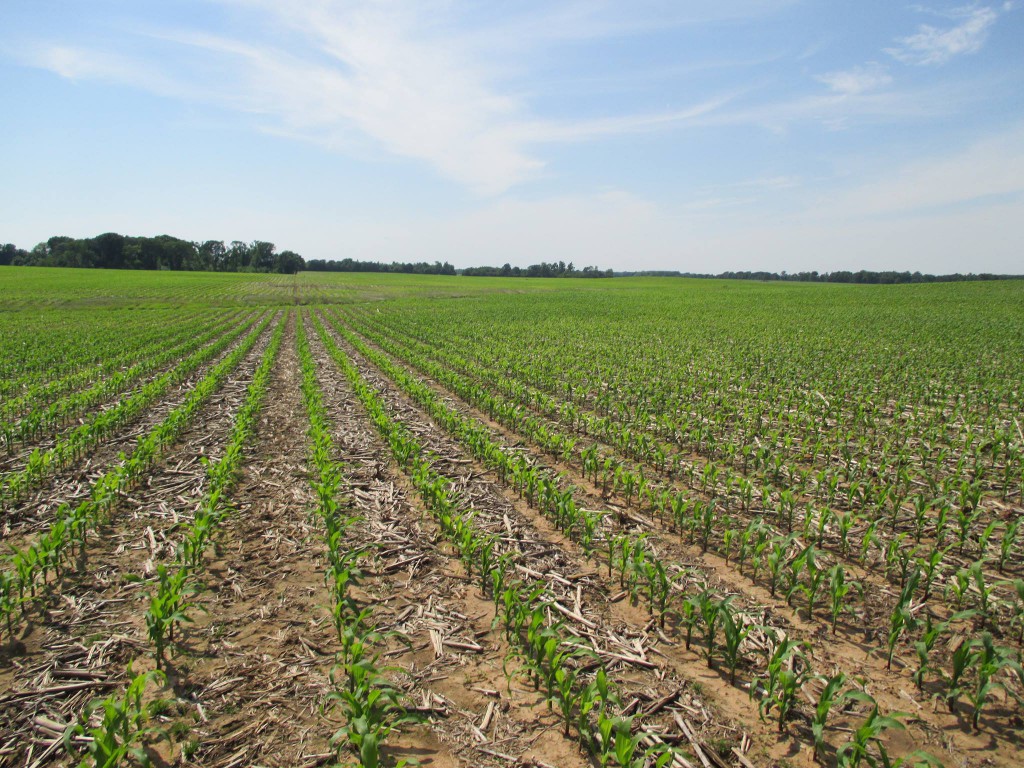
Variable-rate application of lime and fertilizer is a common practice to address soil nutrient variability within the agricultural fields. When it comes to precision soil sampling to determine site-specific nutrient requirements, grid sampling still remains one of the most widely used methods due to its ease of implementation and not requiring any additional data layers. In a grid sampling strategy, the field is divided into grids of a pre-defined size and soil samples are collected from each grid to determine the spatial soil pH and nutrient variability within the field. The size of the sampling grids can range from 1.0 to 5.0 acres (or larger) but a smaller grid size is generally recommended to accurately capture the difference in nutrient levels. However, smaller grid size also means more samples and greater sampling costs. While soil sampling on larger grid sizes (≥5 ac) may help cut down on sampling costs, it also presents an argument about the effectiveness of larger grids in accurately depicting the spatial variability within the field. Therefore, one of the most common questions being asked every year is related to the size of the sampling grid. This is an important question as growers want to make better data-driven nutrient management decisions while also being cost-effective with their soil sampling strategy.
To answer this question, we conducted soil sampling using grid sizes of 1.0, 2.5, 5.0, 7.5 and 10.0 ac in nine different fields ranging from 20 to 93 acres in South Georgia in 2022. The actual spatial nutrient variability within each field was also determined using high intensity sampling (2-3 samples/ac). Spatial nutrient maps and the corresponding variable-rate prescription maps were created using each grid size. From that, the application accuracy, total fertilizer applied and the application cost were calculated for each strategy. Figure 1 below shows the spatial K maps for soil sampling using 2.5 (left), 5.0 (center) and 10.0 (right) ac grid size for one of the fields. The difference among the maps depicting soil K variability is pretty obvious and was expected. A similar trend was noticed for soil pH and P in all fields.

The application accuracy (%) and total application cost ($/ac) averaged across lime, P and K for each grid size are presented for three out of nine fields in the table below. The application cost includes the cost of the soil sampling plus analysis and the cost of total amount of fertilizer recommended by each strategy. As expected, the application accuracy is highest (>85%) for the smallest grid size of 1 ac for all three fields and the accuracy decreases, drastically in some cases, with an increase in size of the grid. While the application cost also decreases with increase in grid size but it is worth noting that not all of that is due to the reduced sampling costs but more or so from the under-application in certain parts of the field. In some fields such as Field 3, the lower accuracy at 2.5 ac grid size can also result in similar or greater application costs than smaller grid sizes due to high fertilizer over-application. Thus, the larger grid sizes do help lower the sampling/application costs but not without the expense of reduced accuracy. Additionally, the under-applied areas within the field can further affect the crop yield potential, especially if the nutrient levels are critically low and therefore would impact overall profitability.

The data shown here is not to recommend that all grid soil sampling should be conducted using 1.0 ac grid size but to emphasize that the choice of grid size largely depends on the amount of variability and how much historical data is available for a given field. In general, grid sampling on 1-ac should be used in a field initially during first year of production, in a new field or when there is no field history available, in order to get a baseline of nutrient variability. In consequent years, the baseline information along with other data such as soil type, EC or yield should be used to either sample on larger 2.5 ac grids or eventually transition to a zone-based management as it tends to provide the better combination of accuracy and cost effectiveness. In most cases, for soil sampling to remain valuable and provide any realistic depiction of soil nutrient levels in the field, grid size should not exceed 2.5 ac. We are currently working on different zone management strategies and will be collecting and sharing more of that data in 2023.
